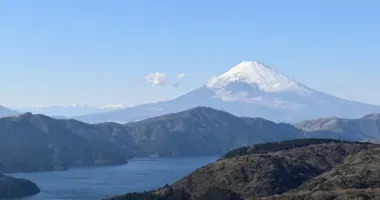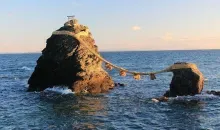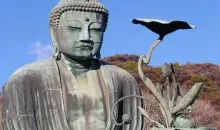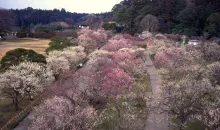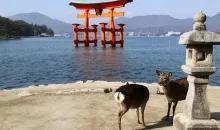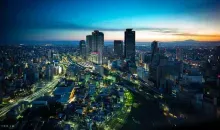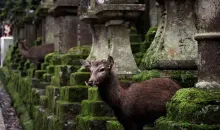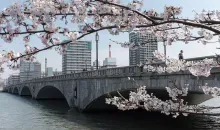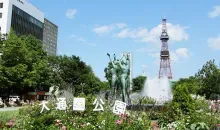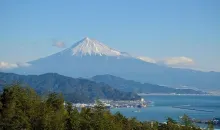Hakone 箱根
Local Time 15:43
Symbol : cloudy
Temp : 15.6°C
Date : Today
Symbol : cloudy
Temp : 15.8°C
Date : Tomorrow
Symbol : cloudy_rainy
Temp : 11.5°C
Date : Saturday
Symbol : sunny
Temp : 12.7°C
Date : Sunday
Local Time 15:43
Symbol : cloudy
Temp : 15.6°C
Date : Today
Symbol : cloudy
Temp : 15.8°C
Date : Tomorrow
Symbol : cloudy_rainy
Temp : 11.5°C
Date : Saturday
Symbol : sunny
Temp : 12.7°C
Date : Sunday
The best onsen near Tokyo
Between Mount Fuji and the Izu Peninsula, the tourist region of Hakone charmingly displays the range of its natural sites, its museums and its onsen... Hakone, the mountainous one, can be discovered and rediscovered during a weekend excursion, so close to Tokyo yet so far from its frenetic atmosphere.
Must-see museums in Hakone
It may seem contradictory to flee the city to get back to nature (and what a nature) and to go "lock yourself up" in a museum, but if you spend several days in Hakone and if you are an art lover, don't miss the following museums: our selection amongst the 24 museums located clandestinely in the serene mountain town.
On the "classic" route, the one presented above and which can be done with the Hakone Free Pass:
- Chokoku no Mori, the open-air museum mentioned earlier, combines nature and art for the pleasure of the senses. Hakone Tôzan Densha line, Gora station
- Narukawa Art Museum. More than 4,000 nihonga (Japanese painting) works from the 20th century can be admired here. Perched on a hill, the museum offers, on a clear day, a breathtaking view of Mount Fuji. It is a short 3-minute walk from the Motohakone-ko landing stage.
Away from the area, but accessible by bus:
- The Pola Art Museum for its impressionist and contemporary pieces and the futuristic building are accessible by bus from Gora station.
- The Okada Art Museum, which includes a large collection of Japanese, Chinese and Korean art dating from the 8th century BC to the present day. In addition to the masterpieces on display, the museum has a garden of more than 15,000 square meters, including a traditional house that has been converted into a tea house. Take the Izu Hakone or Hakone Tozan bus to the Kowakien stop, a 2-minute walk from the museum.
Nestled in the Fuji-Hakone-Izu National Park, Hakone is built around its transport network, an attraction in itself. Circular Hakone mountains run counter-clockwise, against the current, headed north.
A scenic train in the mountains
From the Hakone-Yumoto station, you board the Hakone Tôzan Densha, Japan's first mountain railway and one of the steepest in the world. In June, the track is lined with beautiful hydrangea flowers, and in autumn, maples and other flamboyant trees draw cries of admiration from travellers. Lovers of modern art and nature will get off at the second to the last station on the line, Chokoku no Mori, for a wonderful walk through the open-air museum (see above) where they will come across works by Auguste Rodin, Pablo Picasso, Henry Moore, Nikki de Saint-Phalle and many other renowned artists, both Japanese and foreign.
Once at Gôra station, the final stop, you can choose to visit the Gôra-kôen garden or to continue the visit by taking the funicular-railway climbs to Mount Sôunzan. From there, it's off to the cable car.
- Read also: Hakone's ropeway
See Mount Fuji from Lake Ashi
The cabins climb and the egg arrives at Owakudani, a volcanic site and a potential stop for a visit amidst the nauseating fumes, for a tasting of the famed black eggs cooked in sulfur-laden water.
From Owakudani, the cable car continues, descending (when coming from Gora), to reach Togendai, north of Lake Ashi, with frequent crossings of tourist pirate boats, reveals the chrome-red torii of the Hakone-jinja shrine, breaking the motionless surface reflecting the view of Fuji-san, with its snow-covered summit from its base, enclosing the picturesque forests to the clouds.
Walks and hikes in the forest
As the ship disembarks on the south shore, on the side of Hakone-machi or Moto-Hakone, the two towns bordering the lake. Between the two, you can cross the famous "cedar alley", a path lined with cedars that were planted during the Edo period (1603-1868) when Hakone was a rest-stop along the Tôkaidô route.
Across the road, you can visit the reconstructed Sekisho Shiryôkan checkpoint. For several centuries, entry to the capital was strictly controlled and the last and most stringent checkpoint was located in Hakone.
From Moto-Hakone you can walk along the lake to the torii of the Hakone-jinja Shinto shrine. With its feet in the water, this portico is one of the city's emblems and one of the most popular sites for Instagrammers around the world! You will then have to climb the series of steps that lead to the thousand-year-old shrine.
After this visit, it may be a good time to return to your ryokan or take the bus from Moto-Hakone back to Hakone-Yumoto station.
Hakone and its hot springs
Finally, we cannot talk about Hakone without mentioning its many hot springs, onsen, known by the Japanese for centuries. There are no less than 17 of them! A pleasure of a heavenly experience awaits as you soak your body into the famed Hakone Onsen.
Hakone is the favorite spa of Tokyoites who regularly visits on weekends to recharge and relax away from the bustle of the capital.
Be sure to read our articles on this subject: Hot springs & public baths
Interested by Hakone
Discover other cities to explore












